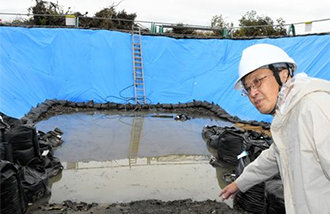North Korean Hospitals Filled to Capacity
North Korean Hospitals Filled to Capacity
Posted April. 27, 2004 21:14,
A child with serious scars from burns and splinter wounds died moaning for his parents.
On April 27, the sixth day after North Koreas Yongcheon explosion, reports of heartbreaking scenes, which illustrate the dreadful realities taking place in the aftermath of the disaster, are being transmitted to the boundary city of Dandung, China.
My 15-year-old cousin who was caught in the blast as he was on his way home, died from insufficient medical treatment even though he was moved to the Sineuiju Provincial Hospital in time, said a Korean resident in China with relatives in North Korea. Two aunts from Dandung crossed the border to Sineuiju with medicine for caring for burn wounds and pain-killers, but it was too late, he added, his eyes full of tears.
About 400 to 500 seriously wounded patients are being treated at Sineuiju Provincial, Municipal, Bangjik, and Sanwon Hospitals in Sineuiju, and many patients are giving up their lives and waiting for the death, according to one Chinese witness.
The witness added that although children who are suffering from burn wounds and serious injuries are crying for help, there is little that can be done to treat them. According to him, small Chinese herb medicine shops in their hometowns are treating patients who have not been accepted into hospitals because no other means of medical treatment except dressing their wounds with ointment is possible.
It has also been disclosed that although North Korean military personnel stationed south of Yongcheon have been deployed to the explosion site to assist in the reconstruction effort, news agencies on location are reporting that recovery work is still difficult due to a shortage of materials and heavy equipment.
I have heard that the soldiers are burying the corpses of the dead, said one source, adding, Because Yongcheon itself was damaged so severely, many refugees are living like homeless people in the nearby mountains.
Refugees whose houses were partly damaged have made makeshift repairs, using plastic bags and blankets to block out the cold wind, while homeless refugees have put up tents on the outskirts of Yongcheon, setting up what amounts to a large refugee camp. The most necessary goods for the refugees are blankets, clothes, and tents for keeping warm, candles for light, and food, said one witness.
A special train loaded with the relief supplies entered North Korea via the China-North Korea Friendship Bridge at around 11:20 p.m. on April 26 headed for Sineuiju, a North Korean city on the Chinese border. It looked like the train was loaded with steel pipes and construction materials, and the train was about 15 freight cars long, said a bystander who observed the train. But most relief goods and materials for recovery are being sent by vehicle.
World Vision Korea, which has received a requests for support from a North Korean non-governmental organization, met with the organizations employees at Dandung on April 27 in order to send approximately 5,000 blankets to North Korea. Volunteers of the Movement for Helping the Refugees of the North Korea Yongcheon Incident have also arrived at the scene and to facilitate then transportation of relief goods to North Korea from Dandung.
Yoo-Seong Hwang yshwang@donga.com







